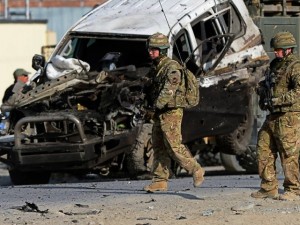Latest News
US intelligence reveals Iran’s connection to deaths of 500 U.S. troops in Iraq, Afghanistan
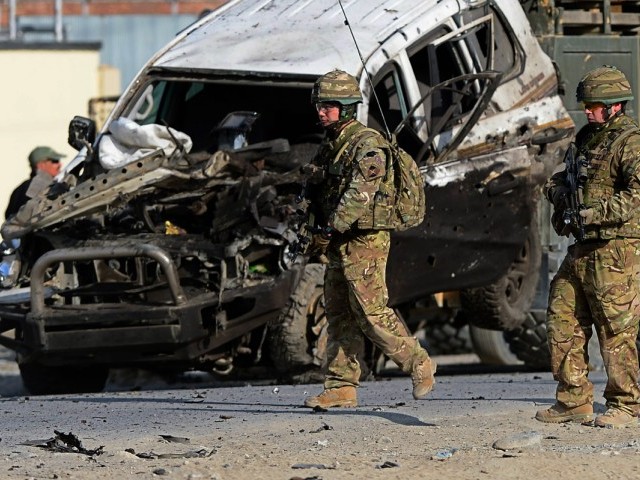
The United States intelligence reveals that At least 500 U.S. military deaths in Iraq and Afghanistan were directly linked to Iran and its support for anti-American militants.
According to Military Times, the figure underscores the controversy surrounding Washington’s deal with Tehran, a long-sought goal for the president — but one that is fiercely opposed by many Republicans in Congress and other critics.
The Military Times has written that many of those estimated 500 deaths occurred during the so-called surge in Iraq, when President George W. Bush ordered an influx of tens of thousands of troops to confront what had devolved into a sectarian civil war. Scores of American personnel were killed or maimed by highly lethal bombs, known as explosively formed penetrators, or EFPs, that Iran manufactured and supplied to Shiite militias across the border in Iraq. Many EFPs were powerful enough to destroy U.S. humvees and breach tank hulls.
The startling number emerged last week as Sen. Tom Cotton, an Arkansas Republican and Army veteran who served as an infantry officer in Iraq and Afghanistan, pressed the issue at a confirmation hearing for Marine Corps Gen. Joseph Dunford, who is Obama’s nominee to be chairman of the Joint Chiefs of Staff.
“Senator,” Dunford responded, “I know the total number of soldiers, sailors, airmen and Marines that were killed by Iranian activities, and the number has been recently quoted as about 500. We weren’t always able to attribute the casualties we had to Iranian activity, although many times we suspected it was Iranian activity even though we didn’t necessarily have the forensics to support that.”
The Defense Department does not specifically track casualties linked to Iran. The 500 estimate is a ballpark figure based on intelligence assessments, according to a Pentagon official familiar with Dunford’s remarks.
The memory of those deaths was surely a factor in the caution signaled by the Pentagon on Tuesday afternoon, after Obama’s announcement of this landmark deal between Iran, the U.S. and five other countries.
“As we implement this historic agreement, deterrence remains a major component of America’s national security,” Defense Secretary Ash Carter said in a statement. The U.S. military will remain ready to “check Iranian malign influence” and “utilize the military option if necessary,” he added.
The Iranian-made EFPs first appeared in Iraq in 2005 and for years were the most lethal weapon that American troops faced during the eight-year Iraq war.
Unlike the typical improvised explosive devices U.S. troops encountered there, the EFPs used more sophisticated technology and required more skilled milling to produce. Also known as “shaped” explosives, they used curved copper plates to direct or “shape” the bomb blast.
The estimate of 500 American deaths is probably on the low side, said David “Bo” Bolgiano, a retired Army Special Forces officer who deployed to Iraq in 2006 and 2007 with the Joint Improvised Explosive Device Defeat Organization, an organization created by the Pentagon to rapidly address the number of casualties inflicted by roadside bombs and other IEDs.
“It’s very difficult to quantify because, when you have an IED explosion that occurs in theater, you’d have to connect the dots and say, ‘Well, we have three U.S. casualties tied to that IED,’ and then that IED is tied to a specific copper-plated EFP from Iran. Often times, those forensics are missing,” Bolgiano said in an interview.
“The big EFPs from Iran were fairly easy to identify because of the metallurgy involved and the copper plate formation,” he said. “We had beyond-a-reasonable-doubt proof that Iran was the main supplier of the copper-plate EFPs,” said Bolgiano.
Troops referred to them as “IEDs,” but that’s not completely accurate, Bolgiano said.
“Improvised is a little bit misleading because it makes it sound like a basement bomb-maker, and that was not the case. The shaped charges, the copper plates, the components were anything but unsophisticated. They were designed and at the level anything that any other non-Western government would have,” Bolgiano said.
Cotton contends that number is much greater than 500, with still more American troops wounded in action as a result of Iran’s influence on U.S. adversaries in both war zones.
A spokeswoman for the senator, Caroline Rabbit, said Tuesday that Iran “has the blood of hundreds of Americans on its hands and this deal only gives them billions of dollars to continue killing Americans.” She was unable to provide Military Times with a more-detailed breakdown of those statistics, nor was the Pentagon.
American troops pulled out of Iraq in 2011 and returned last year as the Islamic State group overran Iraqi forces in places U.S. troops fought and died to liberate. In the eyes of many Iraq War veterans, to include some senior U.S. military officials, the Iraqi Shiite militias with links to Iran also have American blood on their hands.
In March, the top U.S. commander in the Middle East said he hoped the strategy for defeating Islamic State extremists will not involve an alliance with those groups.
“Three tours in Iraq commanding troops who were brutalized by some of these Shia militias … I will not — and I hope we never — coordinate or cooperate with the Shia militias,” Army Gen. Lloyd Austin, chief of U.S. Central Command, told the Senate Armed Services Committee last winter.
But after the demoralizing fall of the city of Ramadi in May, the U.S. military shifted its policy. Now, U.S. warplanes are launching airstrikes in support of some Shiite militias fighting the Islamic State under the command and control of the Iraqi government.
Dunford, who pending confirmation will become only the second Marine to serve as the U.S. military’s top officer, referred to Iran as a “malign force,” telling lawmakers that, despite a nuclear agreement, Iran will continue to exert its influence across the Middle East. One need look no farther than the Red Sea, where this past spring American naval vessels moved to block an Iranian arms shipment bound for rebel forces fighting the American-backed government in Yemen.
“If confirmed as the chairman,” Dunford said, “I’ll make sure that our leadership has a full range of military options to deal with Iranian activity.”
In a statement, Cotton indicated he believes the deal with Iran is a mistake, principally because it comes with an infusion of “tens of billions of dollars to finance its sponsorship of terrorism against the United States and our allies.”
“When I was a platoon leader in Iraq, my soldiers and I faced deadly roadside bombs, made and supplied by Iran,” the statement read. “I tried to reassure them, but I could only tell them to hope it wasn’t our day to die by Iran’s roadside bombs. If Iran obtains a nuclear weapon, I fear the United States will only be able to hope it isn’t our day to die by an Iranian nuclear bomb.” (Military Times)

Latest News
AWCC launches telecom services in Kunar’s Noor Gul district
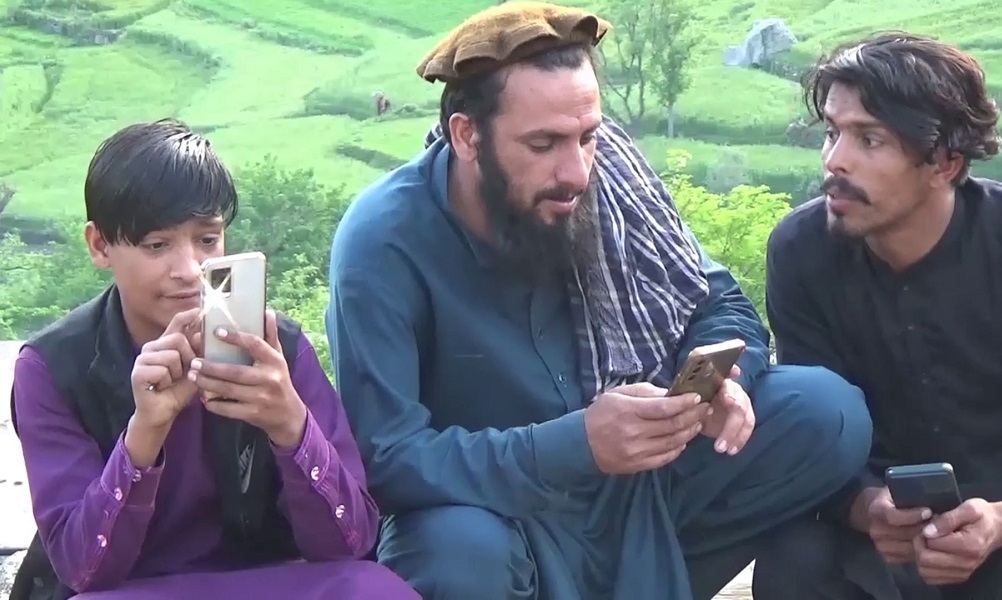
Afghan Wireless Communication Company (AWCC) has rolled out its telecommunication services in Noor Gul district of Kunar province, becoming first company to launch telecom services in the district.
Noor Gul had been deprived telecommunication services in addition to other basic life facilities.
“Telecommunication services have been launched here for the first time. The population here is very large. Many people will benefit from the services. We are trying to connect this site, which is currently connected to satellite, to Microlink in the near future,” said Attaullah Sahil, head of AWCC in the eastern zone.
The officials of Kunar Directorate of Communications welcomed the AWCC’s move.
“Around 500 families live here. Its population is about 10,000 people. Telecommunication services and facilities are provided for them. We appreciate these AWCC services,” said Abdul Wali Marshall, Kunar’s director of communications.
Jalal al-Din Shams, the spokesperson of Afghanistan Telecom Regulatory Authority (ATRA), stated: “Unfortunately, since the day that telecommunication services have started in Afghanistan, there has not been enough attention to quality. The previous governments did not pay attention to it. Fortunately, a process has started now with which ATRA and the Ministry of Communications can bring about many changes in quality.”
Residents of Noor Gul district, who previously faced many problems due to lack of access to telecommunication services, expressed their satisfaction with the latest move by AWCC.
“There was no telecommunication service here,” said Rozi Khan, a resident of Noor Gul district. “This is the first time that AWCC services have been launched here and we are very happy. We also want 3G and 4G services for more convenience. During 20 years, the government paid no attention to this valley.”
Security officials assure of providing full security.
“There were many problems here due to the lack of telecommunication services. For an ordinary call, people used to pay 300 or 400 afghanis. We assure all telecommunication companies that there is no problem in the area of security,” said Fazlur Rahman Zarqawi, the police commander of Noor Gul district.
With the improvement of security situation in the country after the Islamic Emirate’s takeover, AWCC has launched telecom and internet services in many remote areas.
Latest News
Afghan journalists ‘must be celebrated, supported and protected’: UNAMA
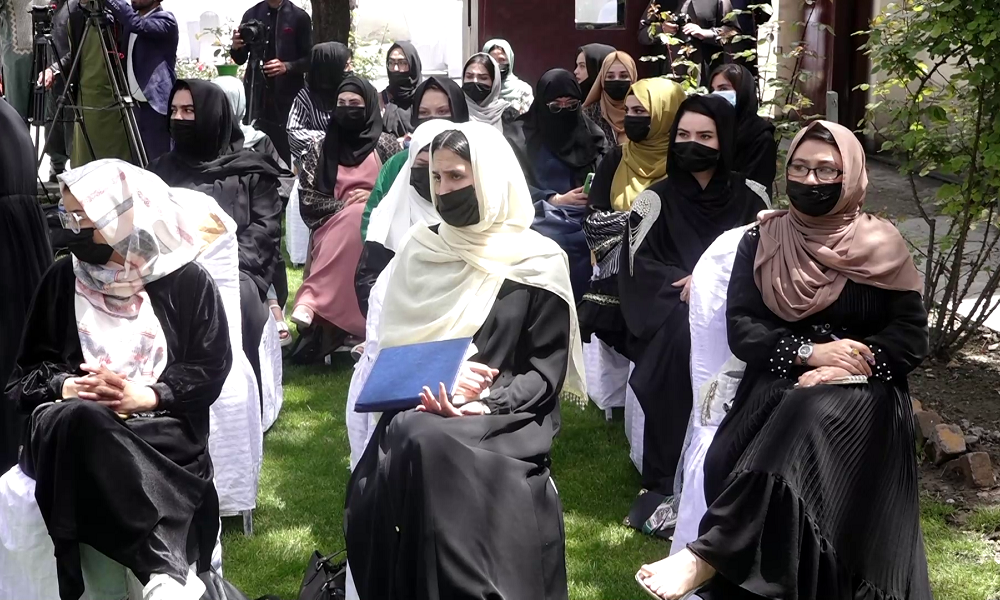
The United Nations Assistance Mission in Afghanistan (UNAMA) said Friday in a statement marking World Press Freedom Day that Afghan journalists “must be celebrated, supported and protected.”
“As we mark World Press Freedom Day, we pay tribute to journalists across Afghanistan who are doing their best to keep the nation informed, often at great risk. Their work is essential for an informed and prosperous nation and for action on education, the environment, health, the economy, and good governance for all Afghans. They must be celebrated supported, and protected,” the statement reads.
Meanwhile, the US Embassy in Qatar, which operates in Qatar, also said that Afghan journalists are facing many problems in carrying out their media activities, and the activities of female journalists are still limited in this country.
Some journalists also ask the government to support the media and journalists.
“We ask the Islamic Emirate officials to approve the law on mass media and the law of access to information as soon as possible so that journalists can carry out their work following these laws,” said Haidar Nazari, a journalist.
Reporters Without Borders in its latest ranking of media freedom, recognized Afghanistan as one of the most dangerous countries for journalists and added that the country has fallen from 152nd to 178th place.
“The state of the Afghan media in the economic sector and the country’s journalists are in a bad economic situation, this matter should be taken seriously. Otherwise, publishing statements and declaring support for the media community will not be effective,” said Hojatullah Mujadadi, the head of Afghanistan Free Journalists’ Association (AFJU).
The IEA officials have repeatedly emphasized that they are committed to supporting freedom of speech and media activity in the country in accordance with Islamic values and national interests, and they are trying to provide reliable and timely information to journalists.
Latest News
Almost 28,000 foreigners visit Afghanistan in past year
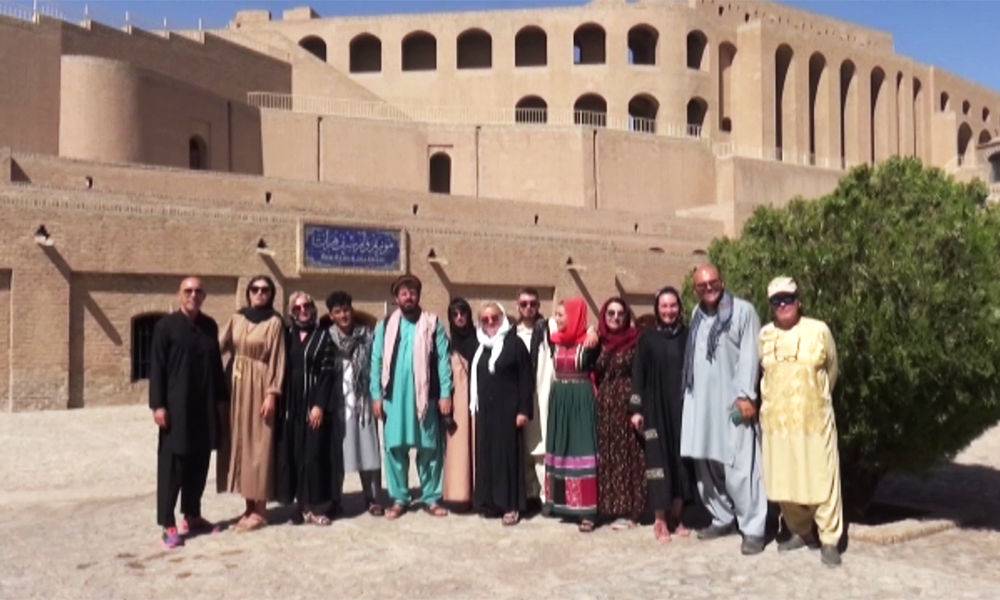
The National Statistics and Information Authority (NSIA) said this week that in the past year, almost 28,000 foreign nationals have visited Afghanistan.
The authority said that over the past year, it registered the entry and exit of 27,914 foreign citizens through land border crossings and airports in the country.
According to the figures recorded by this authority, the highest number of border crossings of foreigners was through Nimroz province crossing, Herat airport, Torkham crossing, Haritan crossing and Kabul International Airport.
NSIA said most people came in for work purposes or as tourists.
The authority also stated that tourists primarily visited historical sites in Bamiyan, Herat, Kandahar, Nangarhar, Ghor, Badakhshan, Kunduz, Paktia, Khost, Nuristan, Balkh, Samangan and Kunar provinces.
-

 Sport3 days ago
Sport3 days agoAfghanistan announce T20 World Cup 2024 squad
-

 Sport5 days ago
Sport5 days agoKohli slams strike-rate talk and pundits ‘from the box’
-
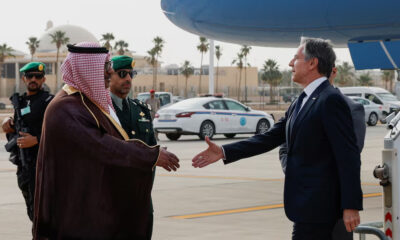
 World5 days ago
World5 days agoBlinken arrives in Saudi Arabia to discuss Israel normalization, post-war Gaza
-
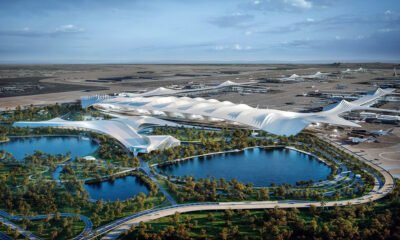
 Regional5 days ago
Regional5 days agoDubai ruler approves new $35 billion airport terminal
-

 Health5 days ago
Health5 days agoNationwide polio vaccination campaign kicks off across Afghanistan
-

 Sport3 days ago
Sport3 days agoNew Zealand to go ahead with Afghanistan cricket Test
-

 Science & Technology5 days ago
Science & Technology5 days agoMercedes Benz unveils electric G-class at Beijing Auto Show
-

 Sport4 days ago
Sport4 days agoKolkata Knight Riders hammer Delhi Capitals in heatwave-hit IPL

